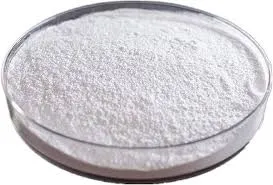
Septemba . 28, 2024 14:25 Back to list
Enhancing Cement Strength with Innovative Bonding Additives for Improved Durability and Performance
Understanding Cement Bonding Additives Enhancing Strength and Durability
Cement bonding additives have emerged as essential components in modern construction, providing significant improvements in the adhesion properties of cement-based materials. These additives are designed to enhance the performance and durability of cement, offering a range of benefits such as increased strength, reduced permeability, and improved resistance to environmental factors. This article will explore the various types of cement bonding additives, their applications, and the advantages they provide.
What Are Cement Bonding Additives?
Cement bonding additives are chemical agents that are incorporated into cement mixtures to modify their properties. They work by improving the bond between the cement and the substrate materials, such as aggregates, bricks, or stones, thereby enhancing the overall integrity of the construction. These additives can be organic or inorganic and are selected based on the specific requirements of the project.
Types of Cement Bonding Additives
1. Polymer-Based Additives These are synthetic materials that improve the adhesion and flexibility of the cement mixture. Common examples include styrene-butadiene rubber (SBR) and polyvinyl acetate (PVA). Polymer-based additives help in reducing cracking and promote water resistance, making them ideal for exterior applications and areas prone to moisture.
2. Synthetic Latex Additives Similar to polymer additives, synthetic latexes enhance the bonding properties of cement. They create a flexible film within the cured cement paste, allowing for greater elasticity and reduced shrinkage. These additives are especially beneficial for applications on substrates that experience movement or vibration.
3. Chemical Grouts These are liquid bonding agents that penetrate existing concrete surfaces to create a strong bond with new cement materials. Chemical grouts are often used in repair works to fill cracks and voids, thereby reinforcing the structure.
4. Surface Modifiers These additives improve the surface characteristics of cement products. They can enhance workability, reduce dust formation, and improve resistance to efflorescence. Surface modifiers are commonly used in precast concrete elements and tile adhesives.
Applications of Cement Bonding Additives
Cement bonding additives are versatile and find applications in various construction situations
- Repair and Restoration Projects These additives are crucial for repairing old or damaged concrete. They improve the adhesion of new cement to existing surfaces, ensuring a strong, durable bond.
cement bonding additive

- Exterior Coatings In applications where moisture and weathering are concerns, bonding additives provide enhanced water resistance and durability. This is particularly important for structures exposed to harsh environments.
- Tiles and Flooring When laying tiles or floor finishes, bonding additives can significantly improve adhesion, reducing the risk of tiles lifting or cracking over time.
- Precast Concrete Elements In the manufacturing of precast concrete products, bonding additives ensure consistent quality and durability, enabling the creation of strong, long-lasting elements
.Advantages of Using Cement Bonding Additives
Incorporating bonding additives into cement mixtures offers several advantages
- Improved Adhesion They enhance the bond between different materials, ensuring that structures remain intact under various stress conditions.
- Enhanced Durability By reducing permeability and increasing resistance to environmental factors, these additives prolong the lifespan of cement products.
- Reduced Cracking The flexibility provided by certain additives minimizes the risk of cracking due to shrinkage and thermal stress.
- Cost-Effectiveness While there may be an upfront cost for these additives, their ability to enhance durability and reduce the need for repairs can lead to significant savings over time.
Conclusion
Cement bonding additives play a pivotal role in modern construction, providing essential enhancements to the properties of cement. By understanding the types, applications, and benefits of these additives, construction professionals can make informed decisions to improve the quality and durability of their projects. As the construction industry continues to evolve, the importance of cement bonding additives in achieving sustainable and resilient structures cannot be overstated.
-
The Widespread Application of Redispersible Powder in Construction and Building Materials
NewsMay.16,2025
-
The Widespread Application of Hpmc in the Detergent Industry
NewsMay.16,2025
-
The Main Applications of Hydroxyethyl Cellulose in Paints and Coatings
NewsMay.16,2025
-
Mortar Bonding Agent: the Key to Enhancing the Adhesion Between New and Old Mortar Layers and Between Mortar and Different Substrates
NewsMay.16,2025
-
HPMC: Application as a thickener and excipient
NewsMay.16,2025
-
Hec Cellulose Cellulose: Multi functional dispersants and high-efficiency thickeners
NewsMay.16,2025







